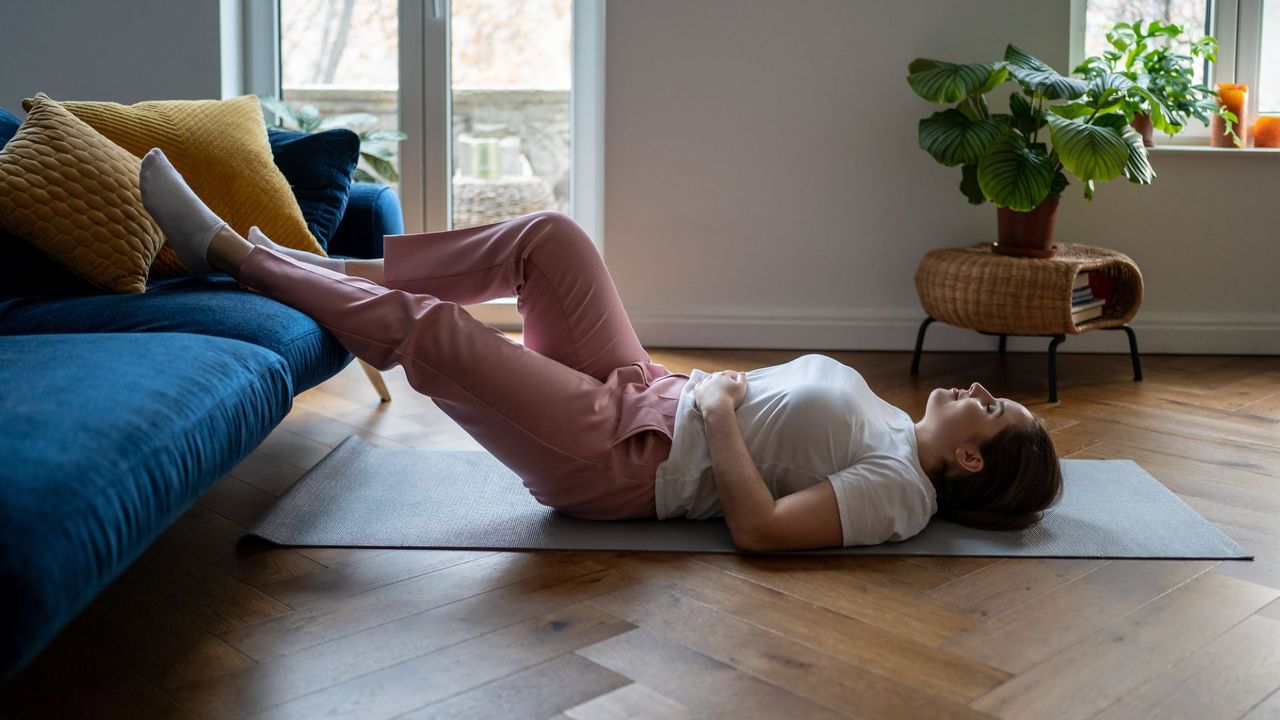
Going through the menopause triggers a lot of changes in your body, including your pelvic floor.
This is the group of muscles that sit at the base of the pelvis. They play an important role in bladder and bowel function, which means a weak pelvic floor can lead to incontinence and affect sexual function.
Women are more likely to be impacted by pelvic floor issues than men. One small study shows that 83% of women between the ages of 18 and 59 have experienced a pelvic floor health symptom in the past year.

"We naturally have weaker pelvic floors than men and that's because of hormones, the shape of our bones, and we tend to have slightly wider pelvises,” explains Leanne O’Brien, specialist pelvic health physical therapist at Ten Health. “It's also because the [female] pelvic floor has two holes in it,"
And when you reach menopause, the risk of pelvic floor issues can become even greater.
"Our pelvic floors are naturally not as strong or resilient as men's. As we get older, particularly when we hit perimenopause and menopause, the pelvic floor will get weaker," says O'Brien.
Why does the pelvic floor get weaker during menopause?
Hormone health can have a big impact on the pelvic floor. In fact, for women, the pelvic floor can become weaker week-to-week, as a result of the menstrual cycle.
"The pelvic floor is quite reliant on estrogen, and that's why our pelvic floor strength and control can change slightly, or it can appear to change, with our monthly hormonal cycles," explains O'Brien.
"When we hit menopause, the estrogen levels drop very low, and because the pelvic floor is quite reliant on estrogen—it has lots of estrogen receptors—the pelvic floor gets weaker and it becomes less responsive. It becomes less active and it is not as quick to respond."
What are the symptoms of a weak pelvic floor during menopause?
O'Brien explains that stress urinary continence is a common issue associated with menopause.
"If we cough, sneeze or jump up and down, that [pelvic floor] reaction is not quite so quick."

According to O'Brien, many people ignore stress incontinence at first, which becomes a problem when perimenopause and menopause starts.
"Estrogen levels eventually start to really drop [during menopause] which can cause a worsening of those symptoms, and it's far more difficult to treat during menopause, because the pelvic floor isn't as responsive," she explains.
Prolapse is another common pelvic floor issue associated with menopause.
"Prolapse is really common, particularly with people that are considered hypermobile who are more likely to suffer from stress incontinence and pelvic floor related issues."
How to strengthen your pelvic floor during menopause
Prevention is better than cure. Even if you're not menopausal yet, strengthening your pelvic floor could help reduce your risk of symptoms arising in the future.
But don't worry if you're already peri-menopausal or menopausal and experiencing symptoms, you can still do things to help.
"We know for a fact that as we get older, we get weaker, so unless we do something to counteract that, that process is going to happen," O'Brien says. "This is why strength training, in particular for the older population, is becoming more and more popular.
"The stronger you are, the more mobile you are, the better your quality of life is likely to be into your older age, because we have to work against this natural tendency for us to get weaker as we get older—and that also includes the pelvic floor," she adds.
There are specific exercises you can do to strengthen the pelvic floor, such as Kegels, and it's also important to strengthen the muscles surrounding your pelvic floor, including the glutes and the abdominal muscles.
Take a look at O'Brien's workout to help you strengthen your pelvic floor—it requires no equipment and can be done at home.







